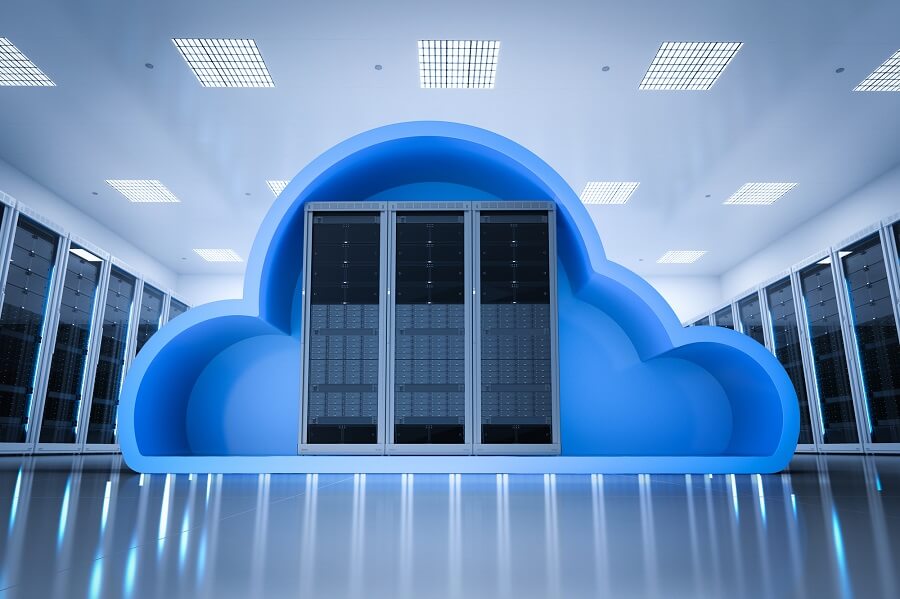 In recent years, cloud services such as AWS (Amazon Web Services) have become popular, but I think there are still many companies using on-premises servers. In this article, I will explain the advantages and disadvantages of comparing AWS and on-premises.
In recent years, cloud services such as AWS (Amazon Web Services) have become popular, but I think there are still many companies using on-premises servers. In this article, I will explain the advantages and disadvantages of comparing AWS and on-premises.
table of contents
- 1. What is AWS (Amazon Web Services)?
- 2. AWS main features/service overview
- 3. Typical AWS services
- 4. Advantages and disadvantages of AWS
- 5. Summary
1. What is AWS (Amazon Web Services)?

AWS (Amazon Web Services) is a cloud computing service launched by Amazon in March 2006. It is a pioneer of cloud services that have established a new IT infrastructure centered on “free initial costs” and “pay-as-you-go service usage”
for fixed asset type IT infrastructure that involves large investments . More than 10 years have passed since the service started, and now there are millions of users all over the world, and more than 100,000 users in Japan.
◆ AWS (Amazon Web Services) official website (Japanese)
1.1 What is a public cloud?
There are two main types of cloud services: “public cloud” and “private cloud”.
The public cloud is a service that provides a cloud computing environment for a wide range of general users and enterprises via the Internet , and is an image of sharing all resources with users. Many services have a pay-as-you-go system, so you can easily use what you want when you want to use it, and you can flexibly change the usage amount according to your needs, which leads to cost reduction.
Also, unlike a private cloud that builds a dedicated cloud environment, maintenance management is entrusted to the cloud operator, and regular maintenance and specialized knowledge are not required.
1.2 Typical public cloud

Source: Cloud Infrastructure Market Scale Survey for Q2 2020 | Synergy Research Group
According to the ” Cloud Infrastructure Market Scale Survey in the Second Quarter of 2020 ” released by US research firm Synergy Research Group , Amazon (Amazon Web Services), Google (Google Cloud Platform), and Microsoft (Azure) are the six companies in the world. It occupies a share of more than a percentage. All three companies may feel similar services, but of course there are differences in the services they offer.
Next, let’s take a look at the characteristics of the cloud services of the above three companies.
1.2.1 AWS (Amazon Web Services)
AWS (Amazon Web Sevices) is a cloud service of Amazon, which develops the world’s largest mail-order site and video distribution service.
<Features of AWS>
・ More than 175 cutting-edge services (as of November 2020) are available and can be used in any combination.
・ Because multiple servers are located all over the world, it is resistant to data failures.
1.2.2 GCP (Google Cloud Platform)
GCP (Google Cloud Platform) is a cloud service provided by Google Inc., which develops search engines and Google maps.
<Characteristics of GCP>
・ You can use the infrastructure of Google, the world’s largest data center.
・ Services such as AI and machine learning are more substantial than AWS
・ High-speed data analysis is possible using Google BigQuery
1.2.3 Microsoft Azure
Microsoft Azure is a cloud service provided by Microsoft, which handles OS (Windows). Since Azure is built on Windows, it’s a very easy-to-use service for Windows-based companies.
<Characteristics of Azure>
・ Good at linking with Microsoft products (One Drive, etc.)
・ High affinity with on-premises, cloud environment and on-premises environment can be managed on one management screen
・ Has strong problem-solving ability in specific industries such as financial industry and electric power industry
1.3 Differences from on-premises
Unlike AWS (cloud service), on-premises refers to an operation mode in which a physical server is installed in-house . Both have advantages and disadvantages, but which one is suitable depends on the purpose of use and the type of data.
Now let’s look at the difference between AWS (cloud service) and on-premises. The differences are summarized in the table.
| On premises | AWS (Cloud Service) | |
|---|---|---|
| Initial cost | Purchase of hardware, etc.<br)が Expensive if needed</br)が | Cheap |
| Monthly cost | If you operate it in-house, only human rights costs will be incurred if you ask other companies | Monthly fluctuation due to pay-as-you-go billing |
| Days to use | time consuming | Immediately after application |
| Customize | Can be customized freely in-house | Yes, but you need to have a comprehensive knowledge of AWS services |
| Information security | Easy to identify the source of information | High durability |
| Disaster recovery / disaster recovery | Difficult to take measures if your company’s operation system is weak | Relatively easy, but in the past AWS has caused major failures |
| Redundancy | High cost | low cost |
2. AWS main features / service overview

Next, let’s take a look at the main features of AWS and an overview of services one by one.
2.1 Region
A region is an English word that means ” area ” in Japanese.
AWS has multiple servers around the world and is managed in large units called regions. There are many regions such as Tokyo region, Seoul region, Northern California region, etc., and each region is completely separated.
Therefore, a failure in one region does not affect other regions. In addition, there are multiple Availability Zones
in a region that consist of one or more data centers . If one data center fails, the system can continue.
In other words, it is characterized by increased fault tolerance by distributing the system in multiple region availability zones .
2.2 Wide range of services
AWS offers a wide range of services. There are various services such as ” compute service ” that creates virtual servers, ” storage service ” that can store and distribute data, and ” relational database service ” as a database.
Here, we explain three typical services.
2.2.1 Compute
It is a computing service represented by EC2 , and it is characterized by being able to build a virtual server on AWS and use it freely . Abbreviation for “Amazon Elastic Compute Cloud”, you can change the specifications at any time according to the needs of the user at that time. It is easy to deal with the lack of specifications and disk capacity problems that tend to occur during continuous use. When using AWS, it is a good idea to regularly check for unused volumes (EBS), global IP (EIP), and load balancers, focusing on cost reduction.
2.2.2 Storage
It is a storage service represented by S3 (Simple Storage Service) , and is characterized by high durability and unlimited capacity . For example, it looks like an FTP server with unlimited capacity. You can use it for file backup, or you can put static files (image files, CSS, etc.) used on the Web on S3 and distribute them. It also has a versioning feature that allows you to keep the previous version when overwriting with the same file name. However, please note that the cost varies depending on the number of files and the number of accesses.
2.2.3 Relational database
It is a relational database represented by RDS (Relational Database Service) and is required to search and edit the desired data. In particular, relational databases are excellent in information integration and management efficiency, and are suitable for structured data such as accounting data / customer data. In addition, RDS has AWS’s own database engine called Aurora , which is highly fault tolerant and can be expanded up to 64TB.
2.3 Security
Data centers, infrastructure, networks, etc. are built into cloud services. If information leaks from AWS, the AWS side may be held liable depending on the situation, so the AWS side also has a dedicated security unit and is conducting thorough management.
In addition, the data center is arranged in consideration of the risk of attacks from the network and environmental risks such as natural disasters.
3. Typical AWS services

Even though it is AWS, there are more than 175 services (as of November 2020) in it. Each has different purposes and uses, but here are four typical services that are often used.
3.1 Amazon EC2
Amazon EC2 is a service that you can freely use by building a virtual server on AWS . You can create a server with a short screen operation, and you can change the specifications at any time with just a few clicks.
Isn’t it difficult for many people to understand the AWS fee structure even if they look at the official website?
Amazon EC2 has the following three types of fee structure.
- On-demand instance
It is a pay-as-you-go system, and you are charged according to the time (seconds) you used the instance.
- Spot instance
Use another person’s instance that has been left unused at a low price.
- Reserved Instance
You can get up to 72% discount by paying in advance for 1 to 3 years.
Reference: Amazon EC2 | AWS
3.2 Amazon S3
Amazon S3 is a storage service with unlimited capacity that can store and manage files, etc., and can be used for backing up files or hosting static websites.
Amazon S3’s billing system is a pay-as-you-go system, and the price varies mainly depending on the following three items.
- Storage capacity (GB)
- Data transfer volume (GB)
- Number of requests (number of reads and writes)
Reference: Amazon S3 | AWS
3.3 Amazon RDS
Amazon RDS is an AWS relational database .
With Amazon RDS, you can use the following 6 RDBMS.
- Amazon Aurora
- Postgre SQL
- MySQL
- Maria database
- Oracle
- SQL Server
Like Amazon S3, Amazon RDS has a pay-as-you-go system , and the price varies mainly depending on the following three items.
- Instance type
- Storage capacity (GB)
- Data transfer volume (GB)
See: Amazon Relational Database Service (RDS) | AWS
3.4 AWS Lambda
AWS Lambda is a service that allows you to define programs on the cloud and run them over the Internet . There are various uses, and it is possible to perform security-related processing such as authentication and log extraction, as well as necessary for applications such as data processing and file linkage.
And the biggest feature of AWS Lambda is the low price. You can use it for free up to 1 million executions every month.
4. Advantages and disadvantages of AWS

AWS has many advantages such as high scalability and availability and low initial cost, but of course there are also disadvantages. Here, we have summarized the advantages and disadvantages when compared with on-premises, so we will explain them in order.
4.1 [Advantage] High durability
Amazon S3 is designed for 99.999999999% (9×11) durability. It’s extremely durable, with 10,000 objects stored, one of which takes an average of nearly 10 million years to be lost in a failure . Companies around the world use it to store application data because there is almost no risk of losing data.
4.2 [Advantage] Enrichment of technical support
While AWS allows you to freely combine and use services according to your needs, it will often require knowledge that the user cannot solve.
As a result, AWS offers a full range of technical support services .
<AWS Support Plan>
- Basic:
It is given at the time of account acquisition, and customer service and Trusted Advisor * can be used.
- Developer Support Plan:
Assists with architectural and technical questions
- Business support plan:
In addition to developer support, 24/7 Japanese support by phone or chat
- Enterprise Support Plan:
A plan for enterprises with a dedicated technical representative to give top priority.
* Trusted Advisor: An online tool that provides real-time guidance to help you provision resources according to AWS best practices ( quoted from the AWS official website ).
4.3 [Advantage] Low initial cost
With traditional on-premises, the initial cost from hardware procurement to configuration was high, but with AWS there is no initial cost .
The biggest attraction is that the prices are being reduced continuously. Looking at the past 10 years, we have seen more than 80 price cuts.
4.4 [Advantages] Scalability and availability
AWS is also very good at scalability and availability. Even if the server is currently running, you can change the number of servers, CPU, memory, storage size, etc. with just a few clicks of the screen operation . As a result, you can increase server resources in the short term to respond to sudden events that are difficult to respond to on-premises. Of course, it is also possible to restore it when the event is over. It is also highly scalable and has a high ability to keep the system available.
4.5 [Advantage] Security and authority management
Fault tolerance can be improved by placing instances in multiple Availability Zones . If one Availability Zone fails, another Availability Zone instance will be launched, so you can operate without compromising system performance. In addition, AWS has a service called IAM , which is the basis for considering security . Access authority can be managed in IAM, and even if a failure should occur, the cause can be investigated by calculating back from the authority.
4.6 [Disadvantage] There are cases where the configuration and security become more complicated than necessary.
AWS can use services in combination like blocks, and depending on the combination, advanced configuration and security can be realized. However, on the other hand , there is a disadvantage that the configuration tends to be more complicated than necessary . Keep in mind a simple design and operation, and be aware of a design that can reduce the operational burden.
4.7 [Disadvantage] Running cost
Since AWS is mainly a pay-as-you-go system, the usage fee changes every month according to the number of accesses and the amount of data used . Therefore, there is a disadvantage that it is difficult to make a budget by making a trial calculation from service introduction to running cost. For those who can roughly predict monthly usage, ” AWS Charge Calculation Tool ” is also available, so it is a good idea to use it.
See: What is the AWS Billing Tool? | AWS
4.7.1 Introducing multi-cloud should also be considered
Multi-cloud refers to an operation method that uses a combination of multiple cloud services . Even with the same cloud service, each service has a different field of expertise, so one cloud service may not be able to meet all requests, and more and more companies are adopting multi-cloud.
The advantages of introducing multi-cloud are as follows.
・ Vendor lock-in * risk can be reduced
・ Performance can be maximized by using the cloud service that best suits your needs.
・ Distribute risks such as disasters by separating cloud infrastructure
* Vendor lock-in: A phenomenon that is often seen in conventional on-premises, where it becomes difficult to introduce or replace products from other vendors after adopting products or services from a specific vendor.
However, keep in mind that there are operating and management costs associated with multiple services.
4.8 [Disadvantage] Legal risk
Since AWS is a cloud service of a US company, the governing law is Washington state law at the time of contract. Until now, a written procedure was required to change to Japanese law, but from 2017 it has become possible to change to the AWS Management Console (online). In case of trouble, you should first check whether the governing law is Japanese law .

5. Summary
I have explained the advantages and disadvantages of AWS based on the comparison with on-premises.
AWS has many advantages such as low initial cost, scalability / availability, and security, but of course there are also disadvantages.
Therefore, it is important to consider whether AWS (cloud service) or on-premises is the most suitable for the purpose of using the system.

